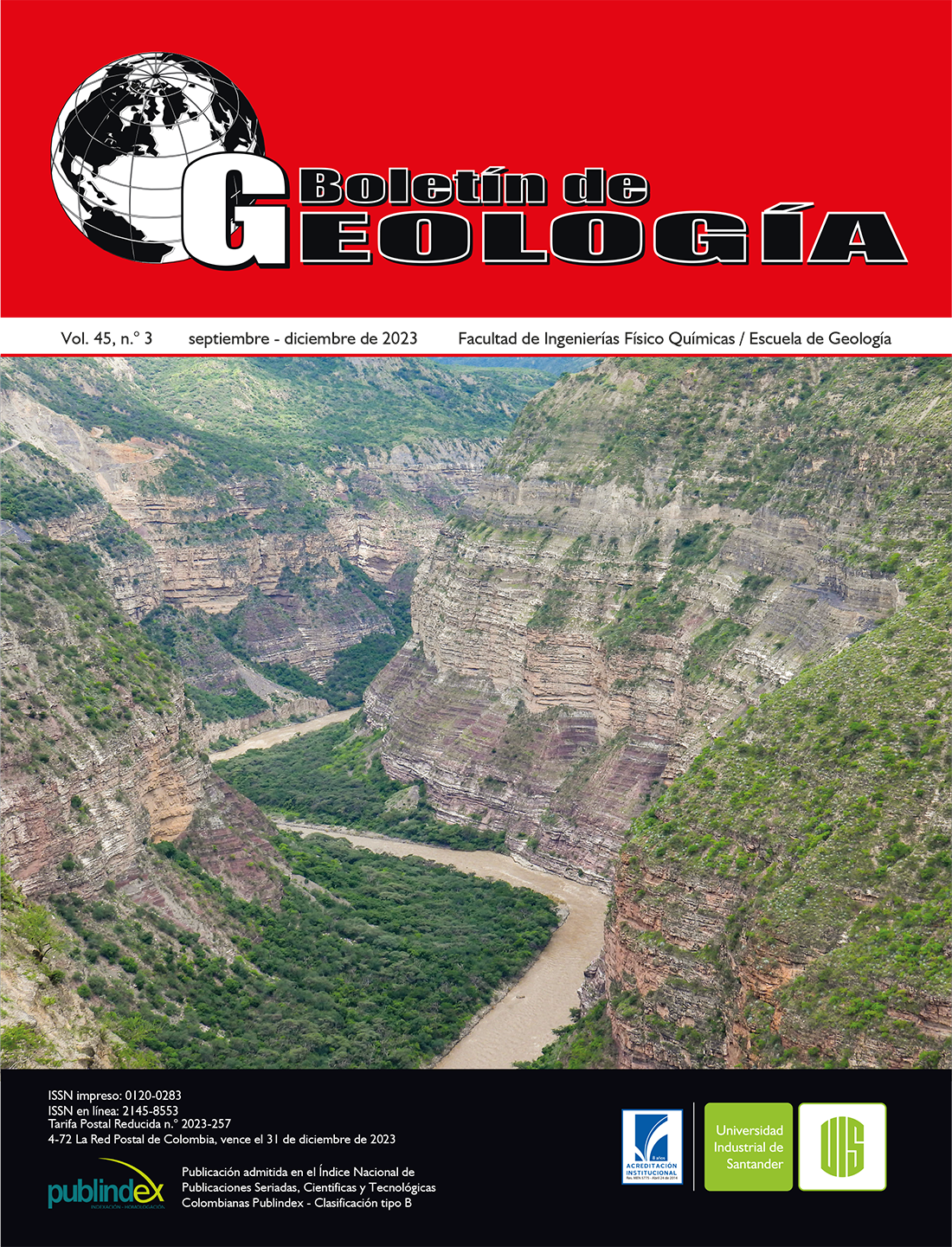Seismic modeling using the fractional, diffusive-propagatory wave equation for the study of anelastic media: application to oil traps and VSP data
Published 2023-10-26
Keywords
- Modelling,
- Fractional derivative,
- Quality factor,
- Oil traps,
- Anelastic media
- Diffusive and propagative phenomenon ...More
How to Cite
Copyright (c) 2023 Boletín de Geología

This work is licensed under a Creative Commons Attribution 4.0 International License.
Altmetrics
Abstract
Obtaining subsurface images with quality spatial resolution is essential for seismic exploration in the search for hydrocarbons. However, the images of the structures located under areas with gas saturation are generally of low quality since the seismic waves are attenuated (lose energy) when propagated by these media. This paper proposes a seismic modeling method based on fractional differential equations: The diffusion-wave equation, which interpolates two physical phenomena, diffusion, and propagation. This equation is studied both in the time domain and frequency domain to observe its amplitude and phase behaviour when the wave propagates in different anelastic materials with different quality factor Q (inverse factor to the attenuation) values. The equation with the time derivative of fractional order is solved numerically using a finite difference scheme, where the mathematical expression of the stability and convergence criteria of the method was established. Wave propagation was modelled in structures with hydrocarbon traps with gas saturation. In addition, a real VSP (Vertical seismic profile) Zero-offset acquisition in which the source is located on the surface and the receivers inside the well was compared with the data obtained from the simulation.
Downloads
References
- Cabrera-Zambrano, F.; Montes-Vides, L.; Sandoval- Flórez, R. (2022). Mesoscopic attenuation mechanism in VTI seismic anisotropy. Journal of Applied Geophysics, 206, 104793. https://doi.org/10.1016/j.jappgeo.2022.104793
- Camacho, G. (2010). Análisis posición de nuevos pozos propuestos por el personal de yacimientos. Technical report, Ecopetrol S.A., Colombia.
- Carcione, J.M.; Cavallini, F.; Mainardi, F.; Hanyga, A. (2002). Time-domain modeling of constant-Q seismic waves using fractional derivatives. Pure and Applied Geophysics, 159(7-8), 1719-1736. https://doi.org/10.1007/s00024-002-8705-z
- Carcione, J.M. (2007). Wave Fields in Real Media. Wave propagation in Anisotropic, Anelastic, porous and electromagnetic media. Elsevier.
- Dvorkin, J.P.; Mavko, G. (2006). Modeling attenuation in reservoir and non-reservoir rock. The Leading Edge, 25(2), 194-197. https://doi.org/10.1190/1.2172312
- Hauge, P.S. (1981). Measurements of attenuation from vertical seismic profiles. Geophysics, 46(11), 1548-1558. https://doi.org/10.1190/1.1441161
- Kjartansson, E. (1979). Constant Q-wave propagation and attenuation. Journal of Geophysical Research: Solid Earth, 84(B9), 4737-4748. https://doi.org/10.1029/JB084iB09p04737
- Liner, C. (2004). Elements of 3D Seismology. PennWell Publishing.
- Liu, Y.; Sen, M.K. (2009). A practical implicit finite-difference method: examples from seismic modelling. Journal of Geophysics and Engineering, 6(3), 231-249. https://doi.org/10.1088/1742-2132/6/3/003
- Wang, X.; Cai, M. (2017). A method to estimate shear quality factor of hard rocks. Pure and Applied Geophysics, 174(7), 2689-2703. https://doi.org/10.1007/s00024-017-1577-z
- Zhu, T.; Harris, J.M. (2014). Modeling acoustic wave propagation in heterogeneous attenuating media using decoupled fractional Laplacians. Geophysics, 79(3), T105-T116. https://doi.org/10.1190/geo2013-0245.1

